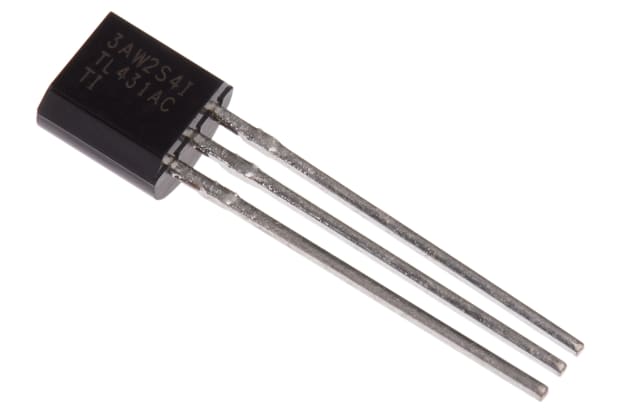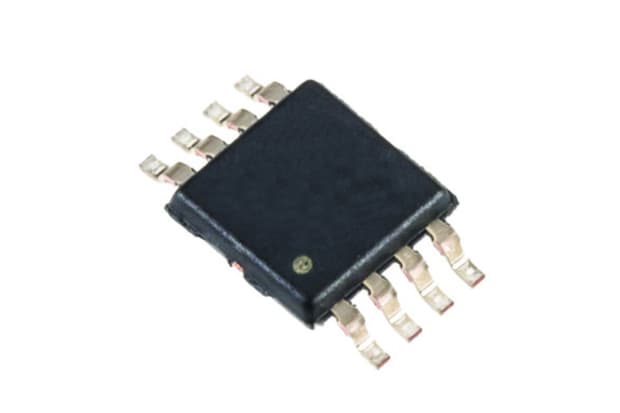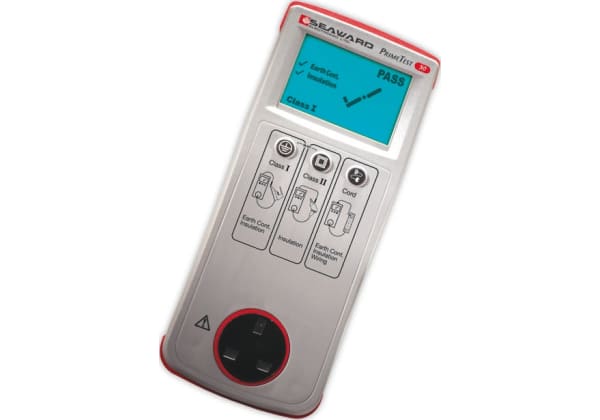- Published 1 Feb 2023
- Last Modified 25 Jan 2024
- 11 min
A Complete Guide to Voltage References
Our guide explains voltage reference design, the different types, and precision voltage reference IC applications.

Reviewed by Mithun Subbaroybhat, Technical Support Engineer (February 2021)
Voltage references are electronic components, devices or circuits that are designed to deliver a constant DC (direct current) output voltage - in other words, a fixed voltage - irrespective of inconsistencies in other external conditions. These might include such changeable factors as total load on the device, fluctuations in the power supply, temperature, humidity, elapsed time, and a host of other variables.
Voltage references are broadly classed as a subcategory of power management integrated circuits (PMICs).
The key job of a voltage reference is to provide a consistent standard against which other components in the system can measure their own input voltage. This allows the system to provide a readily comparable electronic translation for important analogue metrics such as speed, temperature, and pressure.
Voltage references typically provide this known potential for as long as the circuit is switched on and drawing power. This means that other components can measure the types of input signal that are important to their specific roles against a constant standard, and thus accurately interpret them. As such, the most valued characteristics of a quality voltage reference will always be accuracy and stability.
Types of Voltage References
Depending on your specific application needs, you may be able to take advantage of certain specialised voltage reference designs, each with its own performance benefits and limitations. This could include programmable voltage references, for example, as well as various other types like high or low voltage references. With this specific example, it should be noted that most voltage references can only deliver relatively low currents to the load, and few can cope with particularly high current.
In each case, you will need to refer to the manufacturer or supplier guidelines to ensure you are selecting the appropriate type of voltage reference device for the circuit design, power supply and required outputs in question.
The following sections explore some of the main types you may encounter.
Bandgap Voltage References
A bandgap voltage reference is a temperature-independent circuit. This type of component is becoming increasingly popular in voltage reference ICs. It is used to produce a fixed (constant) voltage regardless of fluctuations in the power supply, circuit loading from a device, or - most crucially - operating temperatures.
Bandgap voltage reference circuits effectively cancel out the limitations of negative temperature dependence characteristic of other voltage reference types. This is achieved by using a proportional-to-absolute-temperature (PTAT) circuit that is positive temperature-dependent. This allows a more consistent and reliable performance than most Zener and other common negative temperature-dependent voltage reference diodes.
Bandgap varieties are now widely used in precision voltage reference circuits. They are integral to many different precision voltage reference IC types in which improved temperature stability and low noise performance are key considerations.

Shunt Voltage References
Shunt voltage references are two-terminal models designed for operation within a specified current range, where the reference operates in parallel with its load. When not under a load, the shunt reference sinks just enough current to achieve the desired output voltage with regards to voltage drop. However, under load, it will automatically reduce its sink current to maintain a steady throughput. In essence, a shunt voltage reference maintains its constant voltage output by forcing the sum of [load current + current through the reference] to be fixed and stable.
Therefore, a shunt voltage reference will effectively regulate output voltage by altering its sink current to compensate for fluctuations in the load. In practical terms, this methodology is functionally equivalent to that found in a Zener diode. Shunt voltage references similarly display very good stability and accuracy over a wide range of varying current and load conditions, packaged into a small and simplistic PCB footprint.
Furthermore, shunt voltage references are easy to manufacture as negative voltage references, and they can also be used with both very high and low supply voltages.
General characteristics of a shunt voltage reference include:
- Typically lower operating current than series voltage references
- As a simple 2-terminal device, the voltage references shunt regulator can often be used more flexibly in a wider range of non-standard circuit configurations
- Shunt references effectively impose no limit on maximum power supply voltage, within appropriate power dissipation parameters
- Power supplies will deliver the same maximum current through a shunt voltage reference, regardless of load. Current flows through both load and reference, dropping the voltage to maintain a stable output

Series Voltage References
Series voltage references have three or more terminals and consume a stable supply current over a broad range of supply voltages. A key advantage is that they only draw load and current from the input supply, and only when the load demands it.
When not under any load, it will draw just a very small (quiescent) amount of current through internal resistance. Under load, the voltage drop between input and output will equate to the product of [load current x internal resistance], and thus it regulates the voltage across the circuit - hence the name, as it effectively operates in series with the load.
This operating model makes this type well-suited to use in circuits where the load current or power supply voltage will fluctuate significantly over time. Additionally, the fact that no resistor is positioned between the power supply and the reference also makes the latter especially useful for circuits under high load currents. The absence of an external resistor in a three-terminal series voltage reference helps both to simplify (and shrink) its overall design, as well as to minimise power consumption.
General characteristics include:
- They typically exhibit better initial tolerances and temperature coefficients than shunt versions
- Power supply voltage must be high enough to allow a voltage drop across the series reference’s internal resistance, but not high enough to damage the integrated circuit (IC)
- Without load current, the only source of power dissipation is the reference IC's quiescent current
Voltage Reference Uses
Voltage references can be used for a variety of different precision measurement and control systems, such as power supplies in personal computers and analogue-to-digital converters. They are also used across a broad spectrum of high-precision scientific applications and in medical equipment, where voltage variations need to be tested and adjusted for regularly.
There are many different types of voltage references on sale in the UK, most of which you will generally find categorised by factors such as type, tolerance, rated voltage, reference voltage, rated current, and whether they are programmable.
The most common tolerances are ±2%, ±1% and ±0.5%, but voltage references are available even up to tolerances of ±40%. They can also be classified by nominal voltage. 4.096 voltage references are among the most common.
Voltage Reference Design
While there are many different types of voltage references available today, the most common core designs (usually referred to as the device’s topography) are the two-terminal shunt voltage reference and the three-terminal series voltage reference.
A third type, the charged capacitor voltage reference, was once a more common standard. However, it is seldom used in safety-critical applications today. This is due to its vulnerability to the sources of ionising radiation frequently encountered in many industrial, laboratory and transport environments.
It is also important to note that some voltage references can be manufactured to function in either series or shunt modes.
Of the two-terminal shunt topographies, the most commonly used variety is the Zener voltage reference. When it comes to three-terminal series topography, the most widely used versions are the buried Zener and bandgap type voltage references.

Voltage Reference Schematic
This schematic shows the role of a voltage reference within an IC. The circuit diagram demonstrates a simplified view of a standard schematic for clarity and ease of understanding.
In the diagram, the voltage reference is represented by Vref.
What are Zener and Reference Diodes?
A Zener diode is a type of semiconductor diode, a common electrical component that allows current to flow through itself. Zener diodes allow current to flow from anode to cathode as normal, but crucially, they can also operate reliably when the current is flowing in the reverse direction without breaking down. In short, they are a special type of rectifying diode that will not fail under reverse breakdown voltages. Zener diodes can also be used as voltage regulators.
Most diodes will typically only let current flow through them in a single direction, which is essential in many electronics scenarios. A Zener diode, however, is designed specifically to allow current flow in the opposite direction when the voltage crosses above a specified threshold. This breakdown point is known as the Zener voltage.
The Zener principle dictates that current in a reverse-biased diode starts flowing at a particular voltage threshold before growing significantly alongside a voltage increase. With voltage references and biasing, a Zener diode is able to achieve stable reference voltage by using a resistor in series with the diode itself to maintain a constant current.
Sometimes referred to as an avalanche diode (although the Zener effect is distinct from true avalanche breakdown), the Zener type exhibits a predictable reverse voltage that remains relatively constant within a reasonably narrow range of varying temperatures. As the voltage drop across a Zener diode is fixed - and thus the circuit builder knows the drop across the diode will always match the Zener voltage of the component - it can be used to regulate circuit voltage. This makes diodes as voltage references ideally suited to tasks requiring the reference to be held as stable as possible over time.

This type of diode is widely found in the manufacture of voltage references from diodes to precision, for electronics circuits and systems needing a regulated output, such as in power supplies. It is prized for being both cheap and easy to use and install, with a fairly small die area and number of components. Indeed, Zener diodes are now seen as one of the key basic building blocks of electronic circuits.
They can generate low power stabilised supply rails from a higher voltage, as well as provide reference voltages for circuits and protect them against overvoltage and electrostatic discharge (ESD). Potential downsides of Zener diode use include the possibility of relatively high variances in initial voltage, as well as increased likelihood of temperature drift at broader operating ranges.
FAQs
What is the Correlation Between Voltage References and Current Sources?
Both current and voltage references are integral to analogue circuits. They help to provide regulated, fixed current or voltage to an IC and are essential for precision circuit applications.
What Causes Thermal Hysteresis in a Voltage Reference?
Thermal hysteresis occurs because of temperature cycling and it causes a voltage reference circuit's output to shift. This can be problematic as voltage references are required to provide a precise, reliable output over extended periods. Thermal hysteresis cannot be eliminated but its effects can be minimised. Thermal hysteresis typically follows a predictable maximum value. This is because, in subsequent cycles, many references vary around a nominal output voltage.
How to Choose a Reference Voltage for an ADC?
ADC reference voltage selection is important because analogue-to-digital (ADC) converters require reference voltage input for operation. The first step should be to decide the initial accuracy and voltage output level as this will determine the maximum voltage level that the ADC can convert. You should also consider the ADC's resolution. This can be determined by dividing the reference voltage by the number of potential conversion values. This reference voltage formula should help you to choose.
Additionally, when choosing a voltage reference for a circuit or system, it is important to look at other factors. Buying the best voltage reference for the task at hand should also involve an understanding of which other parameters will be especially relevant to the specific application you have in mind.
Initial accuracy specifications are one of the first criteria most buyers of voltage references usually search for on a manufacturer datasheet. In simple terms, the measured value when testing a product should always fall within the initial accuracy tolerance specified. However, while this specification is always provided by manufacturers and suppliers, it is usually only given for operation at room temperature and with a defined input voltage and load current. This means that it is a starting point for other specifications, but not necessarily an absolute value for all operating conditions and applications.
One factor known to influence initial accuracy tolerances is package stress, meaning that it is important that printed circuit board (PCB) flex is kept to a minimum even before the component is installed and powered. As a result, some industries and sectors will require new voltage reference devices to display manufacturer date stamps and will only accept parts up to a strict age limit for installation.
Related Guides
Related links
- SOIC8 voltage reference IC,REF1004C-2.5
- Renesas Electronics Precision Voltage Reference 3.3V ±2.5mV,...
- Renesas Electronics Precision Voltage Reference 3.3V ±1.0mV,...
- Guide to Solder Sleeves
- A Complete Guide to Toggle Switches
- Microchip Fixed Series Voltage Reference 3.3V ±0.08 % 8-Pin SOIC,...
- Nexperia Adjustable Shunt Precision Voltage Reference 2.495V 0.5%...
- A Complete Guide to Pipe Cutters

